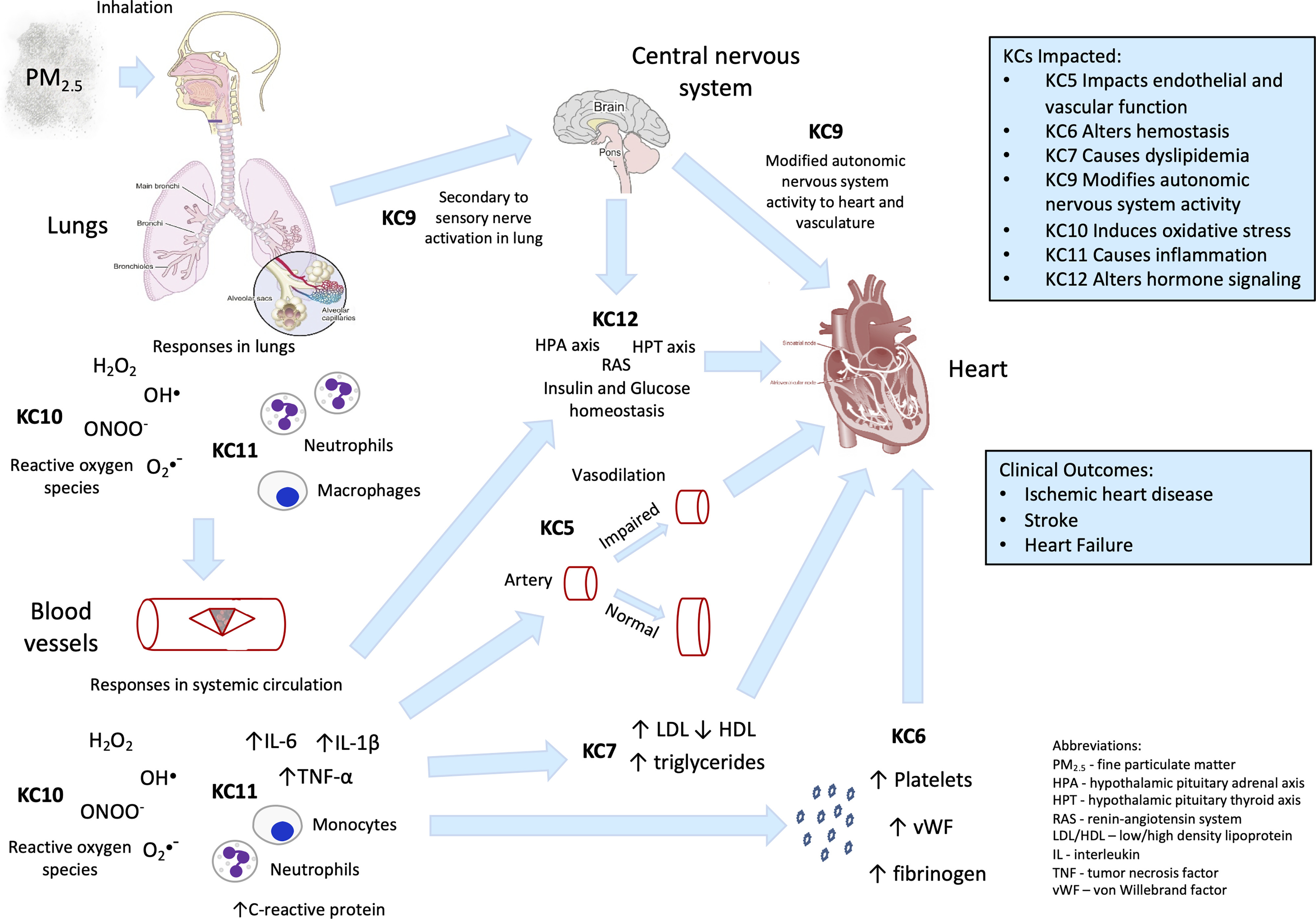Figure 3.

Key characteristics (KCs) associated with toxicity. A summary of how different KCs of fine particulate air pollution () could affect the heart and the vasculature. Some of the detailed mechanisms are given, as well as some clinical end points. Note: , hydrogen peroxide; , hydroxide; •−, reactive oxygen species; , peroxynitrite; , particulate matter in aerodynamic diameter (fine particulate matter).
